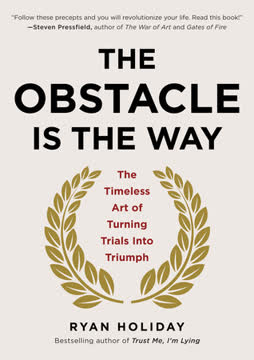Key Takeaways
1. Develop People by Catching Them Doing Things Right
The key to developing people is to catch them doing something right.
Focus on the positive. Most leaders are skilled at finding fault, but true development comes from noticing and reinforcing positive behaviors. Spending time actively looking for people doing things right, even small steps, is a powerful motivator. This isn't just about saying "thanks"; praise must be specific to be effective and believable.
Praise progress. Don't wait for perfection before offering praise. "Exactly right" behavior is built upon a series of "approximately right" steps. Praising progress encourages people as they learn and build confidence, just like teaching a child to walk involves celebrating wobbles and first steps.
Affirmation at home. This principle extends beyond the workplace. Actively affirming the people in your personal life for the things they do right is a marvelous way to strengthen relationships and encourage positive behavior. It provides satisfaction and motivates continued good performance.
2. Feedback is Essential for Growth and Performance
Feedback is the breakfast of champions.
People crave feedback. Just like athletes need to know the score, people are motivated by knowing how they are doing. Effective performance systems provide ongoing feedback, not just annual reviews. Saving up negative feedback or "whitewashing" issues erodes trust and pride.
Cost-effective strategy. Providing timely, specific feedback is one of the most efficient ways to improve performance and satisfaction. It costs nothing but time and attention, yet it can quickly turn performance around. People lose respect for organizations that don't deal with them truthfully.
Ongoing conversation. Make feedback a regular part of your interactions. Observe performance, and then immediately praise progress or redirect efforts. This requires being present and engaged, not just giving directions from a distance.
3. Focus Attention on What You Want to Grow
What we give our attention to, grows.
Reinforce desired behavior. The more attention you pay to a specific behavior, the more likely it is to be repeated. This applies to both positive and negative actions. Focusing on what people do wrong can inadvertently reinforce those negative behaviors.
Accentuating the positive. Like killer whale trainers who feed whales for swimming over the rope, not swimming under it, focusing attention on desired actions increases their frequency. When good performance is followed by positive attention, people naturally want to continue that behavior.
Avoid demoralization. Constantly focusing on the negative can demoralize people and decrease productivity. Shifting your attention to catching people doing things right creates a more positive environment and encourages the growth of productive behaviors.
4. Your Expectations Shape Others' Performance
You get from people what you expect.
The power of belief. Your expectations for others can significantly influence their performance. If you expect someone to be difficult or perform poorly, you may filter out evidence to the contrary and only notice what confirms your initial judgment, leading them to live down to your expectations.
Challenge your filters. To change this dynamic, you must actively fight through your preconceived notions and look for instances where the person is doing something right. This requires perseverance, especially with individuals you've labeled as challenging.
Change your attitude. As you begin to notice and acknowledge positive actions, your own behavior and attitude towards the person will likely change. This shift in acceptance and perspective can, in turn, positively impact their behavior, creating a virtuous cycle.
5. Leadership is a High Calling Focused on Serving Others
Leadership is a high calling.
Beyond personal gain. True leadership is not solely about achieving personal goals or wielding power. It's about using your influence to affect others' thoughts and actions for a higher purpose, whether as a parent, friend, or manager. Power should flow through you, not from you.
Worthwhile results with respect. Leading at a higher level means achieving significant results while treating everyone involved with respect, care, and fairness. It rejects the false dichotomy that leaders must choose between focusing on people or focusing on results.
It's not about you. The realization that leadership is fundamentally about serving others, rather than being served, is the key to leading at a higher level. This perspective shifts the focus from the leader's ego to the well-being and success of the team and customers.
6. Embrace Learning and Change for Continuous Growth
When you stop learning, you stop growing.
Essential for relevance. In a world of constant change, continuous learning is the only true job security. Skills quickly become obsolete, so staying valuable requires constantly upgrading your knowledge and abilities. People who prioritize learning increase their value both within their organization and in the broader job market.
Leaders must model learning. The best leaders are perpetual learners, finding various ways to enhance their skills and knowledge. If leaders aren't serious about their own development, they can't expect their people to be. Modeling a commitment to learning encourages others to do the same.
Adapt to new circumstances. Organizations are bombarded with change, making adaptability crucial. By making learning a top priority, you equip yourself and your team to respond effectively to new challenges, maximize potential, and keep up with the competition.
7. Empowerment Requires Information, Boundaries, and Self-Leadership
People without information cannot act responsibly. People with information are compelled to act responsibly.
Information is power. Giving people detailed information about goals, costs, and impact empowers them to make responsible decisions. When frontline staff have the information and authority to solve problems, customer service improves, and employees feel more valued and capable.
Boundaries channel energy. Empowerment doesn't mean chaos. Like a river needs banks, people need clear boundaries to channel their energy effectively. These boundaries include:
- Purpose: What the company does.
- Values: Operational guidelines.
- Goals: Where the company is headed.
- Roles: Who does what.
- Structure: How the company is organized.
Self-leadership is key. For empowerment to work, individuals must become self-leaders. This means taking initiative, challenging limiting beliefs, leveraging all sources of power (knowledge, task, personal, relationship), and collaborating to get the support needed to achieve goals.
8. Build Trust and Relationships by Taking Responsibility and Apologizing
Love is being able to say you’re sorry.
Vulnerability builds trust. Leaders are human and make mistakes. Being willing to admit when you are wrong and apologize is crucial for building trust and strong relationships. It shows humility and allows others to feel safe sharing their own vulnerabilities.
Apology requires action. Saying "I'm sorry" is only the first step. A sincere apology must be followed by a change in behavior. This demonstrates commitment to not repeating the mistake and is the only way to truly repair the damage and regain confidence.
Invest in relationships. Learning to apologize and take responsibility for your actions is an investment in the people around you. It fosters an environment where people feel respected and valued, making the organization a better place to work and strengthening personal connections.
9. Character is Lived Through Values and Following Through
Character is following through on decisions.
Commitments over announcements. Good intentions and grand announcements mean little without follow-through. Character is demonstrated by ensuring that what you decide or promise actually gets done. This requires creating systems and structures to support your intentions.
Values guide behavior. Outstanding teams are values-driven, not just goals-driven. While goals are set for the future, values are lived in the present and provide a stable foundation. When core values, like serving the customer, are shared and lived, people are equipped to make decisions that align with the organization's purpose, even when circumstances change.
Align values and practice. Identifying core values is important, but they only become real when they are consistently demonstrated in actions and behaviors. Leaders must communicate values clearly, involve everyone in shaping them, and hold people accountable for living them.
10. Learn from Mistakes and Problems; Don't Avoid Them
People in organizations need to develop a fascination for what doesn’t work.
Mistakes are learning opportunities. Instead of asking "Who is to blame?" when something goes wrong, ask "What can we learn?" Many organizations hide errors, but forward-thinking companies embrace mistakes as valuable chances for improvement.
Avoid denial. The tendency to move quickly past problems without analyzing them leads to denial and prevents learning. Like a golfer who doesn't watch a bad shot, avoiding looking at what went wrong hinders the ability to correct it in the future.
Celebrate learning. Some companies even celebrate mistakes to emphasize that they are seen as learning opportunities. This shifts the culture from fear and blame to one of curiosity and continuous improvement. You cannot improve if you don't learn from what doesn't work.
11. Work Smarter, Not Just Harder, by Prioritizing and Reflecting
Don’t work harder—work smarter.
Think before acting. Success isn't just about putting in long hours; it's about thinking strategically before acting. Many people are busy doing things that seem urgent but aren't truly important. Effective leaders step back to ensure important tasks aren't overshadowed by immediate demands.
Prioritize effectively. If people and customers are important, dedicate time each day to making them feel that way. Evaluate your day by asking if you focused on what was truly important, not just what was urgent.
Make time for reflection. The best advice is often to "Don't just do something—sit there!" Taking time for solitude, strategizing, and prioritizing allows you to work more effectively and enjoy the benefits of a job well done, rather than just being busy.
12. True Leadership is Done With People, Not To Them
Leadership is not something you do to people. It’s something you do with people.
Collaboration is key. Effective leadership involves working with your people, not just directing them. When leaders implement strategies without involving or informing their team, it can lead to confusion and resentment, even if the strategy is sound.
Share your strategy. Be transparent about your leadership approach, especially when using different styles for different individuals or tasks (Situational Leadership). Explaining why you are leading in a certain way helps people understand your intentions and provides an opportunity for valuable feedback.
Gain trust and commitment. The true test of leadership is gaining the trust and respect of your team, keeping them motivated, and helping them reach their potential. This partnership approach ensures the team performs well consistently, even when you are not physically present.
Last updated:
Review Summary
The Heart of a Leader receives generally positive reviews, with readers praising its inspirational quotes and leadership insights. Many find it a quick, easy read with valuable advice for personal and professional growth. Some reviewers appreciate the book's focus on servant leadership and character development. However, a few critics note that the content may be repetitive or lack depth compared to more substantial management texts. Overall, readers value the book as a motivational tool and reference for leadership principles.
Similar Books









Download PDF
Download EPUB
.epub digital book format is ideal for reading ebooks on phones, tablets, and e-readers.













